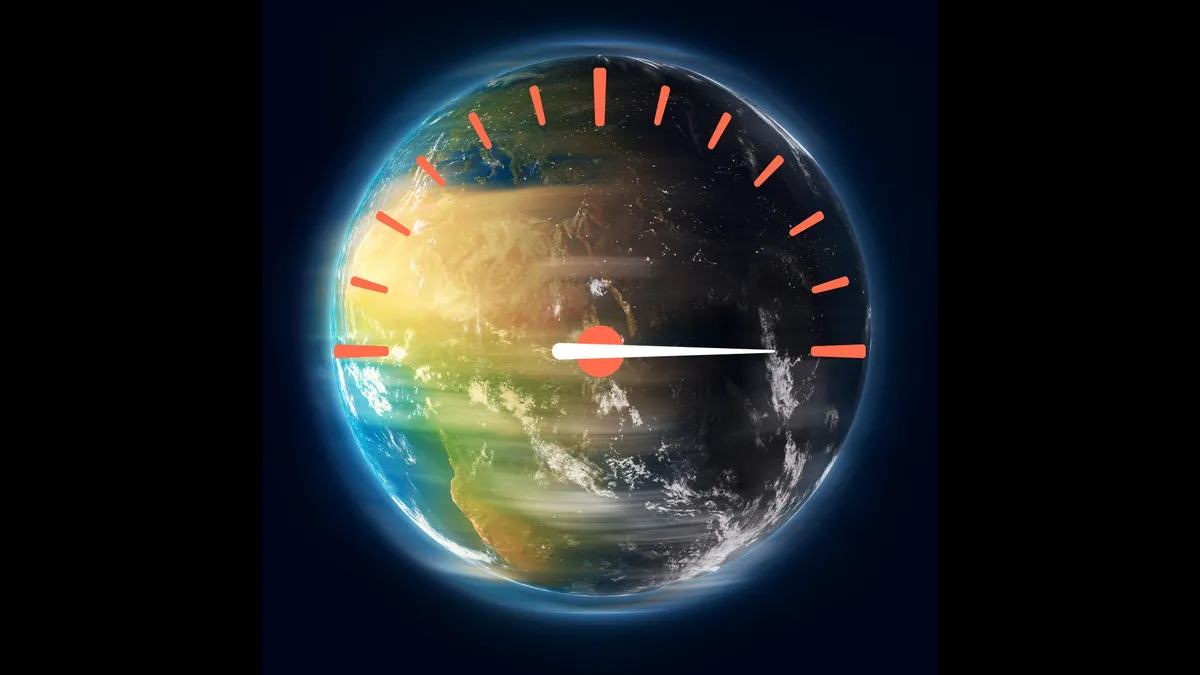
On July 9, 2025, Earth experienced an unprecedented phenomenon, spinning faster than usual, resulting in a day that was approximately 1.3 to 1.6 milliseconds shorter than the standard 24 hours. While this might seem trivial at first glance, it marks the shortest day recorded since modern records began. This occurrence is not an isolated incident; scientists anticipate two additional short days this summer, specifically on July 22 and August 5, all attributed, in part, to the gravitational influence of the moon.
Earth's rotation is not uniformly constant. Although we conventionally define a day as 24 hours, the actual length of a day can slightly fluctuate from one day to the next due to various internal and external forces acting upon the planet. Over extensive timescales, Earth's rotation is gradually slowing down, primarily due to tidal friction caused by the moon. The moon's gravitational pull affects Earth's oceans, generating tidal bulges that act like a brake on Earth's spin, adding approximately 2 milliseconds to the length of a day every century.
However, over shorter timescales—spanning days to months—Earth's rotation can accelerate. This phenomenon was observed on July 9, and it is expected to recur on July 22 and August 5.
On July 9, the moon reached its maximum declination, positioning itself at the farthest point from Earth's equator. This unique alignment creates an off-center gravitational pull, which slightly alters Earth's axial wobble and leads to a measurable increase in rotational speed. According to BBC Sky at Night Magazine, this unusual lunar alignment is the primary factor responsible for the shortened day, and similar effects are anticipated during the upcoming high-declination periods on July 22 and August 5.
Since the 1960s, scientists have utilized atomic clocks to track Earth's rotation with remarkable precision, measuring fluctuations down to the millisecond. The establishment of globally coordinated timekeeping began in 1972, allowing for accurate comparisons between Earth-based time, known as Universal Time 1, and International Atomic Time (TAI). By studying these discrepancies, scientists can precisely monitor how Earth's rotation varies. The International Earth Rotation and Reference Systems Service (IERS) confirmed that July 9, 2025, was the shortest day ever recorded using these advanced measurement techniques.
As Earth's rotation is gradually slowing down over time, scientists typically add a leap second to Coordinated Universal Time (UTC) to ensure that civil time stays aligned with Earth's actual spin. This adjustment has occurred periodically, with the most recent leap second added in 2016. If Earth falls more than 0.9 seconds out of sync with TAI, the IERS intervenes to add a second, generally on June 30 or December 31.
However, the current trend of Earth's increasing rotational speed presents a new challenge. If this acceleration continues, we might find ourselves ahead of atomic time, necessitating the removal of a second—a process referred to as a negative leap second. This unprecedented adjustment has never been implemented before, but some experts predict that if Earth's rotation continues to accelerate by just a few more milliseconds each year, we could see a negative leap second introduced around 2029, although the exact timing will depend on future measurements.